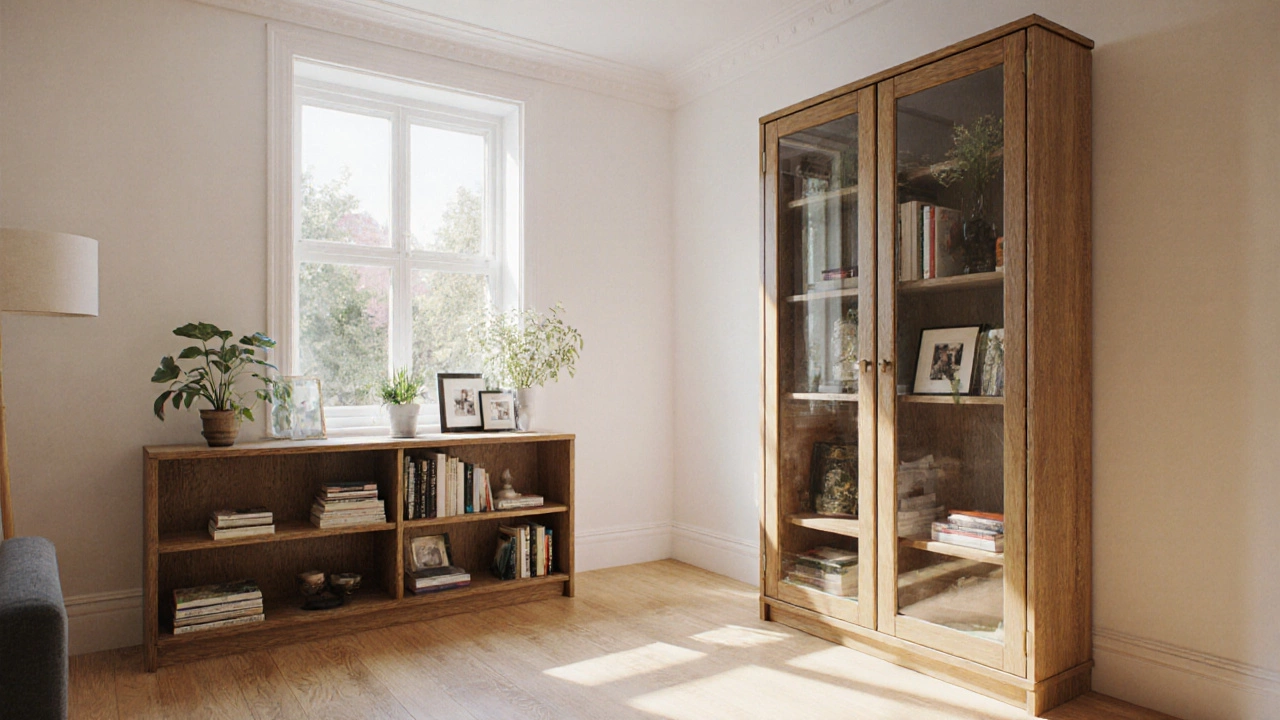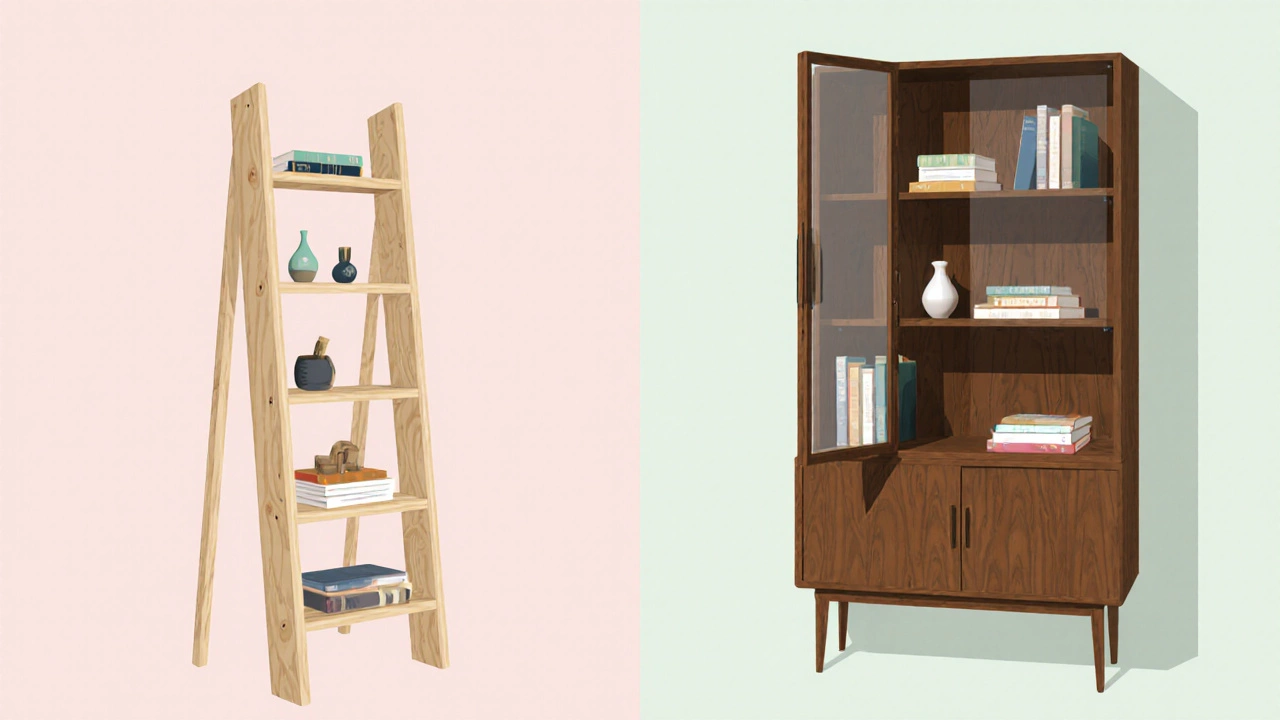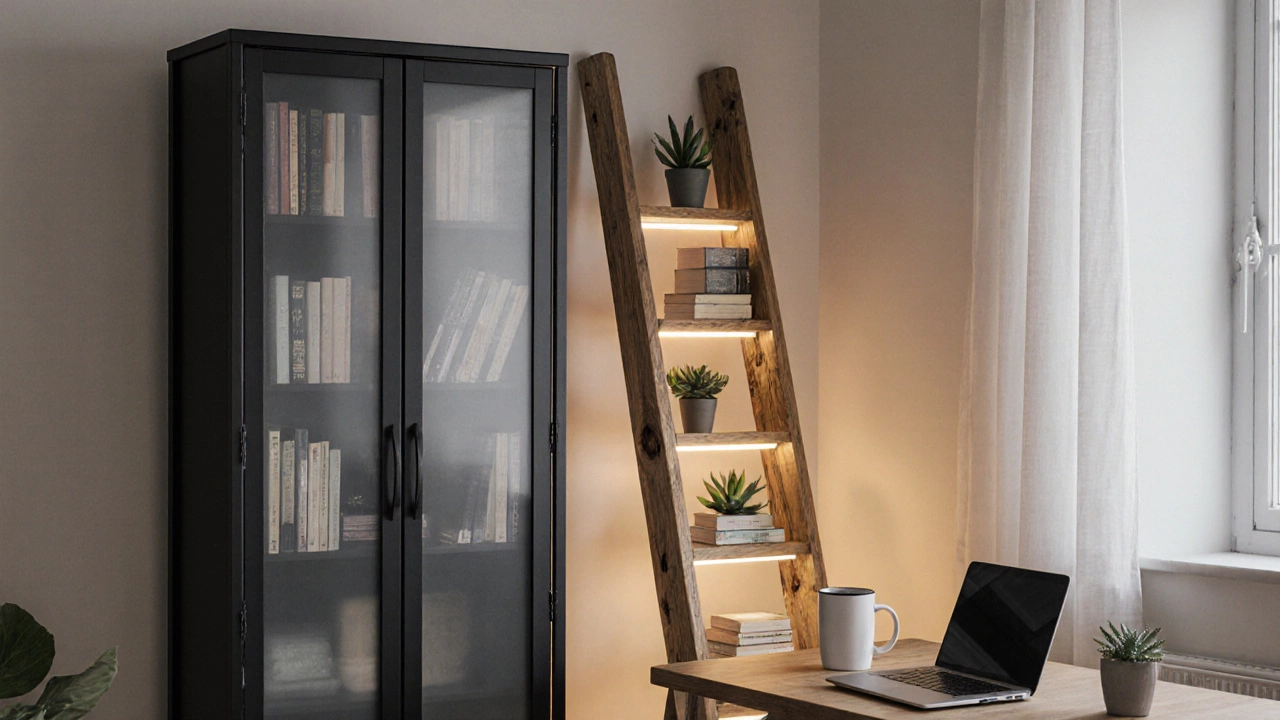
An open-front storage unit with visible shelves. Perfect for displaying books, décor, and frequently accessed items.
A closed or partially enclosed unit with a back panel and often doors. Ideal for protecting books and storing larger collections.
| Feature | Bookshelf | Bookcase |
|---|---|---|
| Typical Back | Open or partial backing | Solid back panel, often with doors |
| Depth (inches) | 9-12 | 12-18 |
| Height Range | 30-90 | 60-84 |
| Protection Level | Low (dust exposure) | High (doors/shields) |
| Typical Use | Display, easy access | Storage, formal décor |
| Price Range (USD) | $50-$500 | $150-$1,200 |
| Style Flexibility | Very high – ladder, wall-mounted, freestanding | Moderate – cabinet-like, glass-door designs |
Ever wondered why some people call a piece of furniture a bookshelf vs bookcase while others seem to use the terms interchangeably? The confusion isn’t just about naming - it’s about function, design, and where the piece lives in your home. Below we break down the details so you can pick the right one for your space.
A bookshelf is a piece of storage furniture designed with open sides and a series of horizontal shelves. The open design makes it easy to browse, pull out a volume, and showcase decorative items alongside books. Typical dimensions range from 30‑48 inches tall for a narrow wall unit to over 90 inches for a freestanding tower. Materials range from solid hardwood to engineered MDF, often finished in stains, paints, or laminates.
A bookcase shares the core purpose of storing books, but its construction usually includes a back panel, and many models feature doors-glass, wood, or metal. This enclosure protects books from dust, sunlight, and curious pets. Bookcases tend to be bulkier, often standing 60‑84 inches tall, and can double as a room divider or a decorative focal point.

While both serve the same basic need, the way they achieve it differs:
If you love displaying your reads alongside photos, plants, or décor, a bookshelf works best. It also fits tighter spaces-lean‑against‑the‑wall ladder shelves can be as slim as 12 inches wide. For living rooms where the unit doubles as a conversation piece, the open look adds visual interest.
Opt for a bookcase when you need protection from dust, kids, or pets, or when you have a large collection that warrants a solid back panel. If you’re furnishing a home office, a bookcase can hide paperwork behind doors, keeping the workspace tidy. It’s also ideal for formal areas where a cleaner, less casual appearance is desired.
Both pieces come in a variety of materials. Here’s a quick rundown:
Finish choices-natural stain, painted, distressed-affect how the piece integrates with existing home decor. Match wood tones to flooring, or choose contrasting colors for a statement.

Both pieces benefit from regular dusting. For wood finishes, use a soft cloth and a wood‑safe polish once a season. Metal frames can be wiped with a damp cloth; avoid abrasive cleaners that cause rust. If your bookcase has glass doors, clean them with a vinegar‑water solution to keep them streak‑free.
| Feature | Bookshelf | Bookcase |
|---|---|---|
| Typical Back | Open or partial backing | Solid back panel, often with doors |
| Depth (inches) | 9‑12 | 12‑18 |
| Height Range | 30‑90 | 60‑84 |
| Protection Level | Low (dust exposure) | High (doors/shields) |
| Typical Use | Display, easy access | Storage, formal décor |
| Price Range (USD) | $50‑$500 | $150‑$1,200 |
| Style Flexibility | Very high - ladder, wall‑mounted, freestanding | Moderate - cabinet‑like, glass‑door designs |
Yes. A tall, sturdy bookshelf with a solid back can double as a divider, offering storage on both sides while maintaining visual separation.
Most modern bookcases come flat‑packed and need basic assembly-usually attaching side panels, shelves, and door hinges. Follow the manufacturer’s instructions for best results.
Stability depends on the design and material. Look for a ladder shelf with a wide base and reinforced joints. Solid wood models can handle 40‑50lb per shelf, while MDF versions should stay under 30lb.
A matte or low‑gloss paint tends to hide fingerprints and small scratches better than high‑gloss finishes. If you prefer wood, a sealed polyurethane coat offers durability against spills.
Absolutely. LED strip lights or puck lights mounted under each shelf create ambient illumination and highlight featured books or décor.
Whether you settle on an open‑front bookshelf or a door‑clad bookcase, the right choice depends on your storage needs, aesthetic preferences, and how you plan to use the piece day‑to‑day. Armed with the differences outlined here, you can shop with confidence and create a reading nook that truly fits your home.
Write a comment